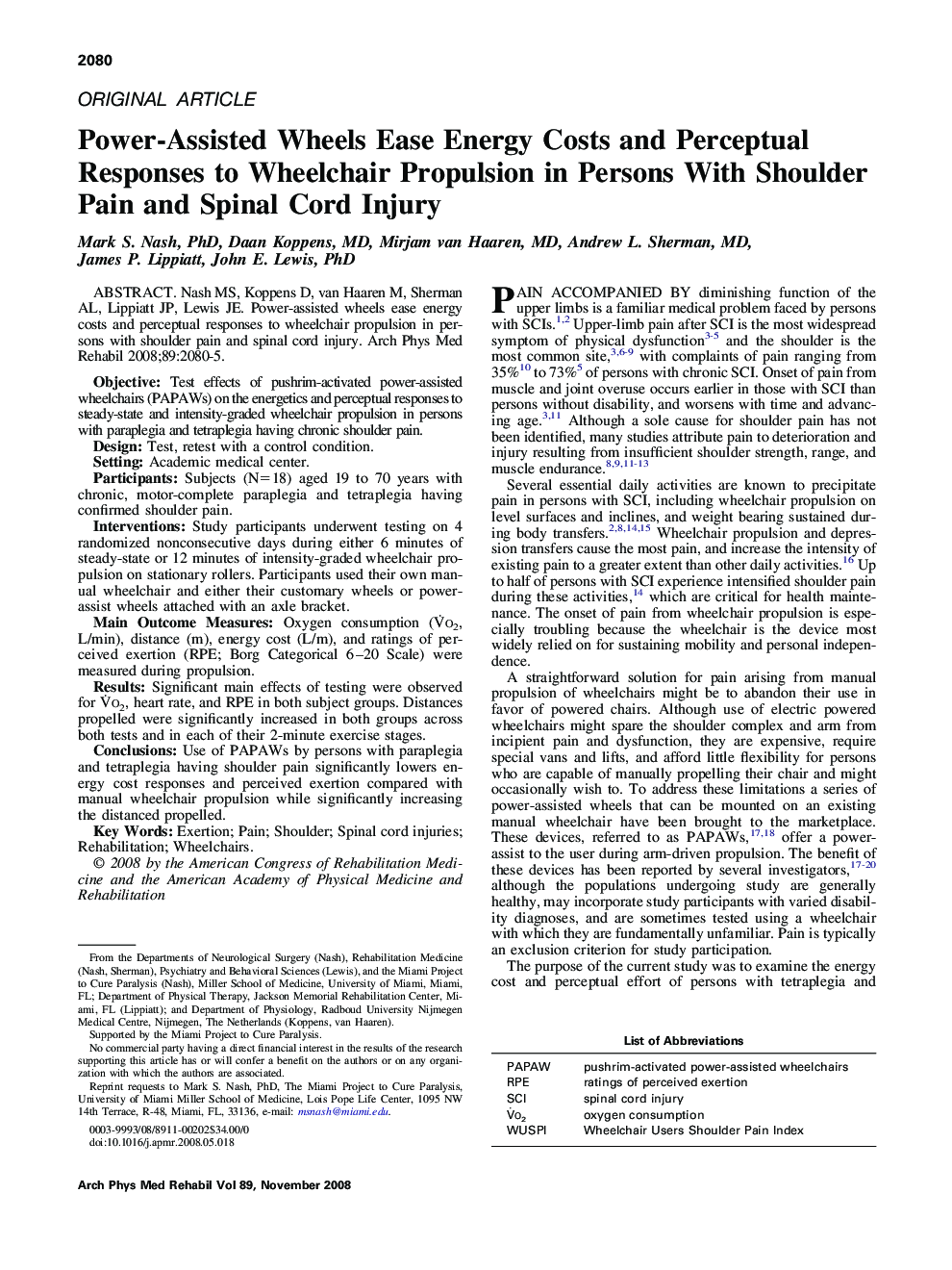| کد مقاله | کد نشریه | سال انتشار | مقاله انگلیسی | نسخه تمام متن |
|---|---|---|---|---|
| 3451274 | 1595773 | 2008 | 6 صفحه PDF | دانلود رایگان |

Nash MS, Koppens D, van Haaren M, Sherman AL, Lippiatt JP, Lewis JE. Power-assisted wheels ease energy costs and perceptual responses to wheelchair propulsion in persons with shoulder pain and spinal cord injury.ObjectiveTest effects of pushrim-activated power-assisted wheelchairs (PAPAWs) on the energetics and perceptual responses to steady-state and intensity-graded wheelchair propulsion in persons with paraplegia and tetraplegia having chronic shoulder pain.DesignTest, retest with a control condition.SettingAcademic medical center.ParticipantsSubjects (N=18) aged 19 to 70 years with chronic, motor-complete paraplegia and tetraplegia having confirmed shoulder pain.InterventionsStudy participants underwent testing on 4 randomized nonconsecutive days during either 6 minutes of steady-state or 12 minutes of intensity-graded wheelchair propulsion on stationary rollers. Participants used their own manual wheelchair and either their customary wheels or power-assist wheels attached with an axle bracket.Main Outcome MeasuresOxygen consumption (V̇o2, L/min), distance (m), energy cost (L/m), and ratings of perceived exertion (RPE; Borg Categorical 6–20 Scale) were measured during propulsion.ResultsSignificant main effects of testing were observed for V̇o2, heart rate, and RPE in both subject groups. Distances propelled were significantly increased in both groups across both tests and in each of their 2-minute exercise stages.ConclusionsUse of PAPAWs by persons with paraplegia and tetraplegia having shoulder pain significantly lowers energy cost responses and perceived exertion compared with manual wheelchair propulsion while significantly increasing the distanced propelled.
Journal: Archives of Physical Medicine and Rehabilitation - Volume 89, Issue 11, November 2008, Pages 2080–2085